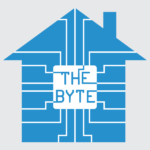Learn what percentage of overall revenues to allocate to marketing, and how to divide expenses between digital, print, events, signage, and other marketing vehicles.
Budgeting can be a frightening proposition for marketers in home building. Many are operating without a firm budget in place, and without guidance as to how to divide that budget between marketing programs.
The “touch and go” approach is rarely successful in home building, where costs of goods are higher than in most industries and profit margins are slimmer. Out of necessity, the study of profitable budgeting for home builders is evolving toward a science. We recently invited one of the industry’s foremost experts in optimizing marketing budgets for ROI to present a webinar for our builders on the topic and here is what they learned.
Here Kevin Oakley of www.doyouconvert.com shares his thoughts on builder budgeting.
How to Determine the Size of Your Budget
In many industries, 10 to 20 percent of revenues are allocated toward marketing budgets. In home building, Kevin advises that 1 percent of revenue is a great place to start. A budget under 0.7 percent of revenues is under-investing, and at over 1.5 percent, it’s too easy to make undisciplined investments. 1 percent of revenues sets a tight, but ideal framework for most builders. This does not include model home furnishings, cell phone usage for sales teams, and traveling expenses. The budget is purely for marketing and advertising.
50 Percent for Digital Advertising and Development
100 percent of today’s home buyers are influenced by the internet. Young, old, urban, and rural buyers all use the internet to find their new homes. Even elderly and technologically unsophisticated buyers rely on people they know to do their online research. So online is where you want to focus your marketing budget.
Online advertising is targeted, allowing you to identify the prospects most likely to buy, and avoid wasting money advertising to general audiences who are not looking and are not likely to be interested, as with billboards.
Just as important, online advertising is trackable. We can learn from prospects’ online behaviors by tracking clicks, timing visits, and placing a cost on each action. This leads us to a concrete ROI for each investment. Many builders have been slow to realize that traditional forms of advertising no longer justify their costs.
Half of the 50 percent should be spent on actual advertising. This includes search engine optimization, adwords, social platforms, syndication sites, display ads, and listings. The other half should be spent on digital development. This includes your website platform, periodic website redesigns, mobile applications, call tracking, CRM platforms, web tools, web hosting services, and anything else that supports your online infrastructure.
Content is King
Your development costs will fluctuate from year to year. In years when a site redesign is required, there will be few dollars left over. But in most years, your development costs will be lower, so Kevin suggests allocating the rest of your development budget to content development.
Quality content brings prospects from noticing your brand to being interested enough to visit your homes and communities. Conversely, poor content squanders the investments required to drive people to your sites. To effectively engage site visitors, you’ll need virtual tours, professional photography, video, 3-D renderings, detailed descriptions, and animations, among the many other content options that your new and existing home competitors are using.
12-20 Percent for Signage
Quality signage that reflects the quality of your homes is worth the premium. “Sign on” with a dependable vendor who can meet your needs on short notice and provide amazing service.
Use directional signs within a radius of a few blocks from your communities. Signs placed miles out create a poor customer experience and are rarely effective. Billboards are not advised as they are not targeted to home buyers, and drivers either don’t care or don’t look at them.
5-8 Percent for Events
Because the experience of walking through a model home is so vastly superior to the typical existing home, events that create these opportunities are worthwhile investments. Allocate 5-8 percent of your marketing budget to model home grand openings, realtor and presale events. Also consider catering house warming parties for new home buyers who can get 30-40 friends to experience their brand new home. It’s even better if you can have a representative on hand to answer any questions. This guerrilla tactic usually results in high quality leads.
2-6 Percent for Collateral
The majority of home buyers co-shop with friends and family who advise them in the process. Often, these co-shoppers will make visits to your model homes, so it pays to have updated collateral for them, representing your current available homes, prices, options, and incentives. The collateral is also especially useful to enable your sales staff and realtors to sell your homes.
Use this material to promote your online content like virtual tours and videos. These experiences will advance buyers’ interest, and they’re trackable behaviors. Maximize the ROI of your content investments by promoting them in all of your collateral.
2-4 Percent for Gifts
Gifts don’t have to be extravagant to convey thoughtfulness. But some items can be perceived as “See you later” or “We’re done now” expressions. Thoughtful gifts like branded cupcakes suggest that you truly do care about your customers’ relationships with your brand and your people. People tell their friends about positive experiences like this.
Divide your gift budget between customers and realtors, and give gifts during the construction process in addition to move-in day. You don’t need to spend much, but just make sure the gifts you give reflect your sincere appreciation.
3 Percent on Innovation
Kevin recommends spending on innovation, and his suggestions include some of the content services BDX offers home builders, like virtual tours of every model in sales centers, and digital design centers online and in sales offices. Innovations like these don’t just enhance engagement and drive interest; they solidify your brand as an innovative builder. This can subconsciously suggest many positive things to buyers about your homes, including storm resistance, digital readiness, and energy efficiency.
Remainder
If you have a remaining budget, Kevin suggests avoiding television and radio ads. These mass media vehicles—if they should be considered by any home builders—should only be used by those with more than a million dollars in annual marketing budget. The remainder of marketing budgets is better spent on targeted marketing efforts.
If you’d like to learn more about how to allocate your marketing budget for maximum ROI, you can watch our recent webinar with Kevin Oakley.
Kevin Oakley of www.doyouconvert.com is the author of Presale Without Fail: the Secret to Launching New Communities and Phases with Maximum Results. He has more than a decade of experience running marketing and sales operations for home builders. Kevin has worked for two different multi-billion dollar revenue builders (NVR and Maronda Homes), as well as for privately owned Heartland Homes. AT NVR, Kevin had full operational responsibility for land, construction, and sales for two divisions in the Pittsburgh MSA. At Heartland, Kevin’s management helped to grow sales by 15-20 percent each year during the downturn. Remarkably, he achieved these results while shrinking the marketing budget each year.
Frequently Asked Questions
- Q: Why is the suggested percentage of revenue for marketing budgets so much lower in home building than in other home service industries? A: If you’re coming from another industry, the suggested 1 percent can be a shock. But we’re not including model home expenses, utilities, commissions, and salaries, which would raise the total cost of sales to 5-7 percent. For pure marketing, based on our industry model, where the cost of goods sold are significantly higher, where sticks, bricks, and land account for a higher percentage of our sales price, most builders can’t afford to spend 10-15 percent. It simply wouldn’t be profitable with a profit margin of 10-20 percent.
- Q: What about investing in directional signage for communities that we’re just starting on Phase 1 (and there are no models)? A: It would be more advisable at that point to spend on digital advertising, where you could legitimately provide a way for people to experience the homes yet to be built than just to drive them to a trailer and a salesperson. Focus on positive customer experiences.
- Q: Will the CRM platform like Constant Contact go into the development budget? A: Yes, web tools like a CRM platform figure into this budget, as well as any online software packages you’re using to track and measure online marketing.
- Q: What are the most effective social platforms? A: It’s all about Facebook and Instagram right now because of the targeting and discoverability they provide. Some builders see some traffic from Pinterest, but until we see significant, repeatable results from other platforms, we suggest focusing your efforts on Facebook and Instagram.
- Q: How can we use direct mail effectively? A: The best way is to target small niches of your most likely buyers, but social media is a much more cost-effective platform for doing just that. If you are going to use direct mail, avoid mass mailing neighborhoods. It’s all about knowing your ideal prospect and targeting them again and again. Frequency matters. Also, remember that currently you can target the majority of those you would reach via direct mail through targeted Facebook ads at a much lower cost.
- Q: Our market is heavy on military personnel. Do you think we should advertise in the local military magazines? This would be something for the innovation part of your budget. It’s something that may be worth testing and tracking to see if it’s a worthwhile long-term investment. Test if for a placement or two, measure results, and make a decision from there.





